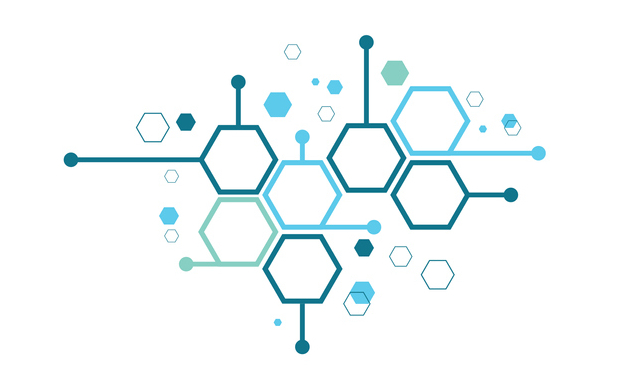This is an academic paper that provides commentary on the barriers and disparities of buprenorphine prescribing, the changes in buprenorphine delivery during the coronavirus pandemic, and how sustaining these changes long-term will lead to better outcomes for those with opioid use disorder.
Treatment Resources
- COVID / Coronavirus related
- Medications for Opioid Use Disorder
- Addiction Treatment Providers
- Medical
- Policymakers
This is an academic paper that provides an evaluation of a harm reduction-oriented, low threshold model to deliver buprenorphine in federally qualified health center in Philadelphia that primarily cares for the underserved. There is also the feature of group-based visits and a person-centered approach. This model resulted in increased patient access and retention.
- Medications for Opioid Use Disorder
- Addiction Treatment Providers
- Harm Reduction Specialists
- Hospitals
- Medical
- Policymakers
This is a report from SAMHSA which gives a summary of actions for programs funded by the State Opioid Response grant. The report provides information related to program implementation and services delivered, specifically related to recovery and comprehensive treatment for opioid use disorder. State initiatives using SOR grant funding are highlighted.
- Comprehensive services
- Medications for Opioid Use Disorder
- Overdose prevention
- Addiction Treatment Providers
- Community Coalitions
- Community Health Officials
- Policymakers
This is an academic paper which discusses the results of a peer recovery support service telephone intervention that aimed to encourage enrollment in medication for opioid use disorder, and decrease the risk for recurring opioid overdoses. The targeted population in this study was individuals who had had an opioid overdose in the last six months, and the intervention received provided personally tailored opioid overdose prevention education and naloxone distribution. The study found that participants who received the intervention were significantly less likely to experience a recurring opioid overdose compared to participants who did not.
- Medications for Opioid Use Disorder
- Overdose prevention
- Addiction Treatment Providers
- Advocates / Peers
- Harm Reduction Specialists
This report from SAMHSA has practice and policy considerations for collaborating child welfare, medical, and service providers in the context of pregnant women with opioid use disorders.
The document is intended to support the efforts of states, tribes, and local communities in addressing the needs of pregnant women with opioid use disorders and their infants and families and endorses a coordinated, multi-system approach.
- Comprehensive services
- Family Support
- Medications for Opioid Use Disorder
- Overdose prevention
- Addiction Treatment Providers
- Community Coalitions
- Community Health Officials
- Health Insurers
- Hospitals
- Medical
- Policymakers
This is a commentary from clinicians that have adapted their treatment of youth with substance use disorders during the coronavirus pandemic, including using telehealth to deliver care. Barriers of telehealth specific to youth and how these can be overcome are discussed.
- COVID / Coronavirus related
- Medications for Opioid Use Disorder
- Addiction Treatment Providers
- Medical
This is a report from the Network for Public Health Law and the Drug Policy Alliance that identifies barriers to accessing medications for opioid use disorder (MOUD) and provides potential solutions to improve MOUD uptake in eight sectors: healthcare system, criminal justice, family law, housing, zoning, transportation, education & youth, and employment.
- Medications for Opioid Use Disorder
- Addiction Treatment Providers
- Community Coalitions
- Criminal Justice
- Employers
- Hospitals
- Medical
- Policymakers
This is a report from Shatterproof that discusses opioid use disorder (OUD) stigma and how it has exacerbated the opioid crisis. Types of stigma are highlighted as well as factors from other successful stigma campaigns (e.g. HIV, mental health). Evidence-informed interventions are presented with a focus on what Shatterproof plans to do to reduce OUD stigma.
- Educational
- Medications for Opioid Use Disorder
- Addiction Treatment Providers
- Advocates / Peers
- Community Coalitions
- Community Health Officials
- Criminal Justice
- Employers
- First Responders
- Harm Reduction Specialists
- Health Insurers
- Hospitals
- Law Enforcement
- Medical
- Pharmacies
- Policymakers
This is a policy brief from the Society for Public Health Education (SOPHE) that gives an overview of the scope of the opioid crisis, discusses treatment options, and gives a summary of federal and state-level initiatives responding to this public health emergency. There is a special emphasis on the role of health education specialists in the opioid crisis.
- Cautious Opioid Prescribing
- Educational
- Medications for Opioid Use Disorder
- Overdose prevention
- Community Coalitions
- Community Health Officials
- Harm Reduction Specialists
- Medical
- Policymakers
This is an academic paper that examines a novel approach to initiating buprenorphine in the emergency department, using a social work team to drive care for patients with opioid use disorder (OUD) and coordinate buprenorphine continuation referrals to existing community resources.
The results are promising. Of the 120 patients that initiated care, 61% presented to initial outpatient intake appointment and 39% remained engaged in treatment after 30 days.
- Early Intervention
- Medications for Opioid Use Disorder
- Post-overdose response
- Addiction Treatment Providers
- Advocates / Peers
- Community Coalitions
- Community Health Officials
- Health Insurers
- Hospitals
- Medical
- Policymakers
This is an academic paper that evaluated a pilot called the Youth Opioid Recovery Support (YORS) program, which is a multi-component intervention, including home delivery of medication and family involvement, designed to improve engagement and adherence to extended-release naltrexone for young adults with opioid use disorder (OUD). Preliminary results are promising. This program has been highlighted and supported by the Arnold Ventures foundation.
- Family Support
- Medications for Opioid Use Disorder
- Outreach
- Addiction Treatment Providers
- Health Insurers
- Medical
This academic paper gives an overview of a telemedicine protocol to facilitate timely access to substance use disorder evaluations in an effort to improve post-overdose care in the emergency department. As a pilot program, experiences with the first 20 participants are discussed.
- Early Intervention
- Medications for Opioid Use Disorder
- Post-overdose response
- Community Health Officials
- Hospitals
- Medical
- Policymakers








